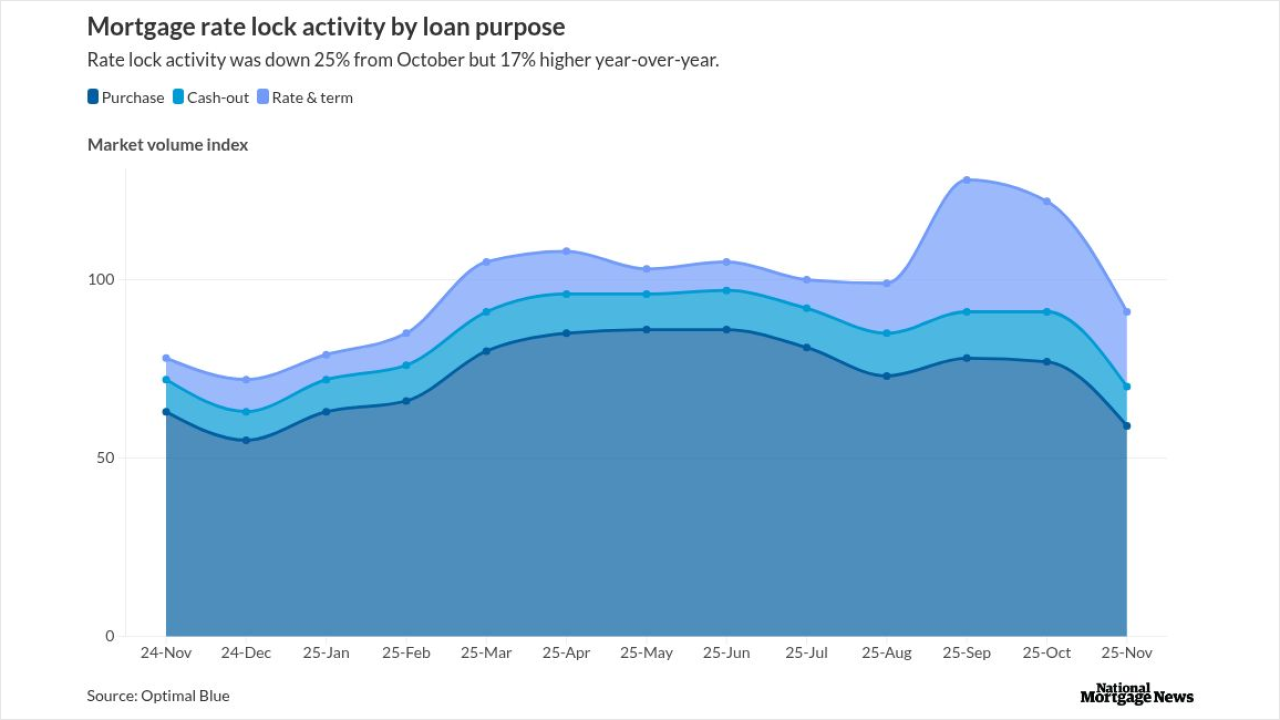The prime jumbo mortgage business is likely to benefit from the Consumer Financial Protection Bureau's recent revisions to the
But those offering jumbo products will have to compete against conforming lenders whose
But with home prices inching up, the market for larger mortgages could likewise expand. In 312 U.S. cities, the typical value of a home is now over $1 million, most of them clustered around nine East and West Coast metro areas. That's a net gain of 45 cities in the last year, according to Zillow. Back in 2015, there were only 208 that met this criteria.

"In 2020, home values soared nationwide because of incredible demand across all price tiers, which we expect to continue well into 2021," Chris Glynn, a Zillow senior economist, said in a press release.
The prime jumbo lenders National Mortgage News spoke with are bullish on their prospects for this year.
"The real opportunity in 2021 is that business models that were designed as 'red-light, green-light non-QM, QM' will now be blurred in terms of how they are executed," said Bryan Filkey, the chief strategy officer at Interfirst. "So our focus is on being able to execute both agency and private loans, which will both potentially go through the same avenues of execution."
The change in the ATR rule — now based on price, rather than debt-to-income ratio — eases the path for prime jumbo lenders, noted Cherry Creek Mortgage's Matt Garlinghouse, executive vice president of capital markets.
"The debt-to-income threshold had some limitations with it in terms of underwriting and it had some hits and misses as it relates to income and affordability and ability to repay," said Garlinghouse. "For the prime jumbo market, when you think of the private sector versus the agency side, it puts things at more parity, on a level playing field."
The change will encourage more lending from outside the agencies or the federally backed programs, he said. "That's actually pretty good news for the players that are doing anything meaningful in the nonconforming prime jumbo market," Garlinghouse said.
The more flexible ATR standard will allow lenders to raise the debt-to-income ratio they underwrite to in order to manage their own risk while still having the opportunity to qualify for the safe harbor, Angel Oak Home Loans CEO Steven Schwalb said. But the company won’t be loosening standards too drastically.
"We're of course prudent where it is prudent to have that higher DTI," Schwalb said. "When you loan somebody $1 million, do you really want to put them out over their skis in cash flow? I personally don't. But do I think we'll see some guys go up to 50% DTI? Probably so."
Interfirst is not worried about increased competition, Filkey said. Most of these companies that are doing prime jumbo are doing other types of loans "which are literally falling from the sky. So how much of that product do you want to do when you can be pumping out these loans with very low risk on the other side of the fence?"
On the other hand "we're not just going to take what's available today and neglect what we would need to build for tomorrow," he continued. So Interfirst is creating different operational functions to handle specific channels and product sets.
Filkey joined Interfirst in October and part of his job is to create alternative funding sources that are more immune to any disruptions in the marketplace like what occurred back in March and April of 2020 due to the pandemic. At Interfirst, that comes from a combination of balance sheet and non-leverage-focused investors, aggregation facilities that are not marked-to-market, and additionally other execution options.
Interfirst spent a significant portion of the last nine months working through a proprietary execution strategy that uses more of a reinsurance concept, like the agencies' credit risk transfer, rather than securitization.
"Learning from the mistakes and standing on the shoulders of those that came before us. We're looking at not using the same exact game plan as everyone else from a funding perspective," Filkey said.
Over at Cherry Creek, which lends in some of the higher cost markets in the Pacific Northwest, prime jumbo loans make up approximately about 12.5% to 15% of originations, while government is less than 10% and conforming makes up the rest. Nonetheless, most of their borrowers have credit scores closer to 800 than 700, Garlinghouse said.
The market upheaval in the early portion of the pandemic did not hurt Cherry Creek's prime jumbo business.
"A few of our investor partners on the nonagency side, thankfully, were pretty committed to the space and we didn't see much disruption at all," Garlinghouse said. Still, "everyone across the board, especially on the nonagency side, tightened underwriting a bit as to be expected, post-COVID. Then as the dust settled, they started to open things back up."
For 2021, Cherry Creek is planning to grow its prime jumbo originations. "We're pretty bullish in it and we're exploring a lot of different avenues to participate more in this space as an independent mortgage banker, with a little bit of an eye for where things are going in the future," Garlinghouse said. "So we got to be a little proactive in anticipation of some things that might change and give ourselves some flexibility if there's a slight disruption."
While the company is primarily a retail shop, it also has a wholesale channel. The company plans to increase its prime jumbo volume in the third party origination segment.
By contrast, Angel Oak Home Loans only offers prime jumbo through its retail channel, and most of what it does meets the QM standard, Schwalb said. He sees an opportunity ahead to grab a larger market share of prime jumbo loans.
Prime jumbo for many years had been dominated by banks that were looking for business relationships with the high net worth customer. As a result, for extended periods, average jumbo mortgage
The pandemic changed that and the inversion has been reversed. So currently, "we see a robust market for prime jumbo, simply because the banks have not been pricing for this. The execution that we're receiving has been a big competitive advantage," Schwalb said.
Because the banks were seeking the relationship, they would just price everyone out of the market. "But now there's an appetite, with liquidity for nonbanks through the conduits that give really competitive pricing for the prime jumbo," Schwalb added.
He expects that nonbanks will remain competitive for the prime jumbo product throughout this year.
However, as conditions change, especially as the pandemic wanes and more people receive a vaccine, the banks' risk appetite could return and they could again seek these loans and offer lower pricing than the nonbanks.
But such a switch is not likely to occur until the latter part of 2021 or the earlier part of 2022, Schwalb added.




